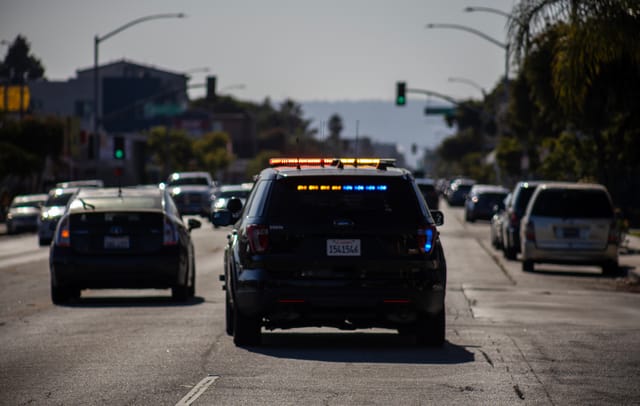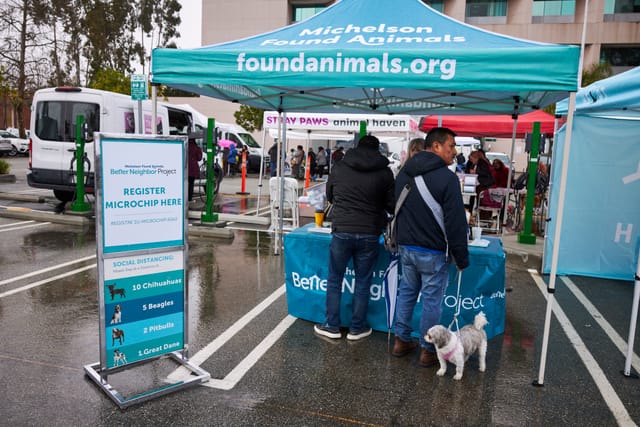SpaceX is bringing Dragon recovery operations to Long Beach next year
The announcement comes 10 days after Elon Musk lashed out at California officials over several new laws, including one dealing with gender identity.

After six years in Florida, SpaceX is bringing its Dragon spacecraft recovery operations back to the West Coast at the Port of Long Beach.
The announcement was made 10 days after SpaceX CEO Elon Musk took to X to denounce California and claim he would move the space firm’s headquarters from Hawthorne, CA to Texas.
SpaceX’s West Coast recovery operations for Falcon 9 boosters has been anchored at the Port of Long Beach since 2021. During his annual Grow Long Beach event in May, Mayor Rex Richardson announced that Musk’s space company signed an expanded five-year lease renewal that more than doubled the size of its Long Beach operations from six acres to 15 acres, including submerged land and dry land, office space and manufacturing space.
“Long Beach is one of just two places in the world where you can see a rocket return home for space on a ship,” Richardson said, adding that he is proud the company chose the city for its operations.
As SpaceX continues to increase its Falcon 9 launches out of Vandenberg Air Force Base, Richardson noted that more recovery missions out of Long Beach will follow — a statement that is only strengthened by the addition of Dragon recoveries.
The announcement that the firm would relocate the recovery operation from the highly conservative state of Florida to California was jarring for many given its CEO’s recent lashing out at West Coast officials.
In a July 16, post on X, Musk said he was fed up with California lawmakers.
“This is the final straw,” Musk wrote in response to a law signed by Gov. Gavin Newsom that prevents schools from making rules requiring staff to tell anyone, including parents, information about a child's gender identity.
“Because of this law and the many others that preceded it, attacking both families and companies, SpaceX will now move its HQ from Hawthorne, California, to Starbase, Texas.”
The move is meant to support recent changes to Dragon construction and reentry operations, according to a statement released last week.
The Dragon spacecraft is designed to carry astronauts and cargo to and from orbit. In June 2010, it became the first privately developed spacecraft to launch, orbit Earth, make reentry and be recovered, according to the company.
In May 2012, Dragon became the first commercial vehicle to visit the International Space Station thanks to a public-private partnership with NASA. The craft was certified for human space flight in 2020 after delivering NASA astronauts Doug Hurley and Bob Behnken to the space station.
But in the four years since, adjustments have been made to the spacecraft, which is made up of two parts: a pressurized section for crew and cargo and an expendable section called the truck, which holds hardware used for power and cooling while in orbit.
For the first 21 missions, the trunk remained attached until after the deorbit burn, being jettisoned shortly before reentering the atmosphere to ensure it splashed down in unpopulated areas of the Pacific Ocean, the company explained.
When the company shifted operations to the East Coast, changes were made to operations. Namely, the trunk was jettisoned from the Dragon while still in orbit, which allowed it to passively reenter Earth’s atmosphere where it was supposed to burn up completely. The passive operation made it impossible to determine the location and timing of reentry, according to the company.
But despite SpaceX and NASA computer models that showed debris would burn up in the atmosphere, trunk debris was discovered in Australia in 2022. The revelation sparked additional data and materials testing.
Most of the debris that made it through the atmosphere landed in the ocean, the company stated, but in the last six months, the company became aware of another landfall incident. No injuries or structural damage has been reported, according to SpaceX.
After more modeling and data review, the company determined it should return to the original operations, with the trunk detaching after the deorbit burn. The trunk will once again splash down, intact, in the Pacific Ocean.
To date, Dragon spacecraft have been launched 46 times, 25 of which were reflights of the reusable capsule. Of those missions, 42 were visits to the ISS to deliver astronauts and supplies.
The most recent Dragon launch, dubbed Crew-8, marked the ninth flight with astronauts aboard for NASA, including the Demo-2 test. The mission blasted off on March 3, just nine days before the safe return of Crew-7 on March 12.
To date, 53 people have flown aboard a Dragon spacecraft across 13 missions, including NASA and private flights.

We need your support.
Subcribe to the Watchdog today.
The Long Beach Watchdog is owned by journalists, and paid for by readers like you. If independent, local reporting like the story you just read is important to you, support our work by becoming a subscriber.





